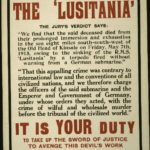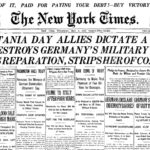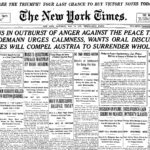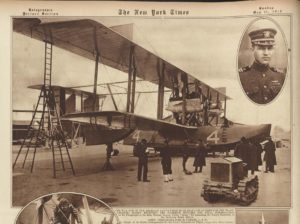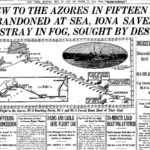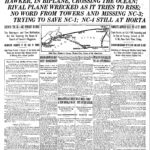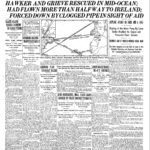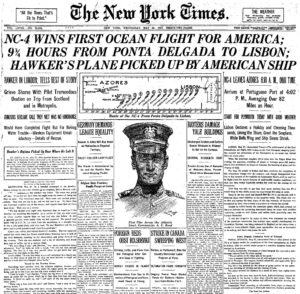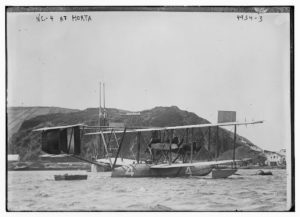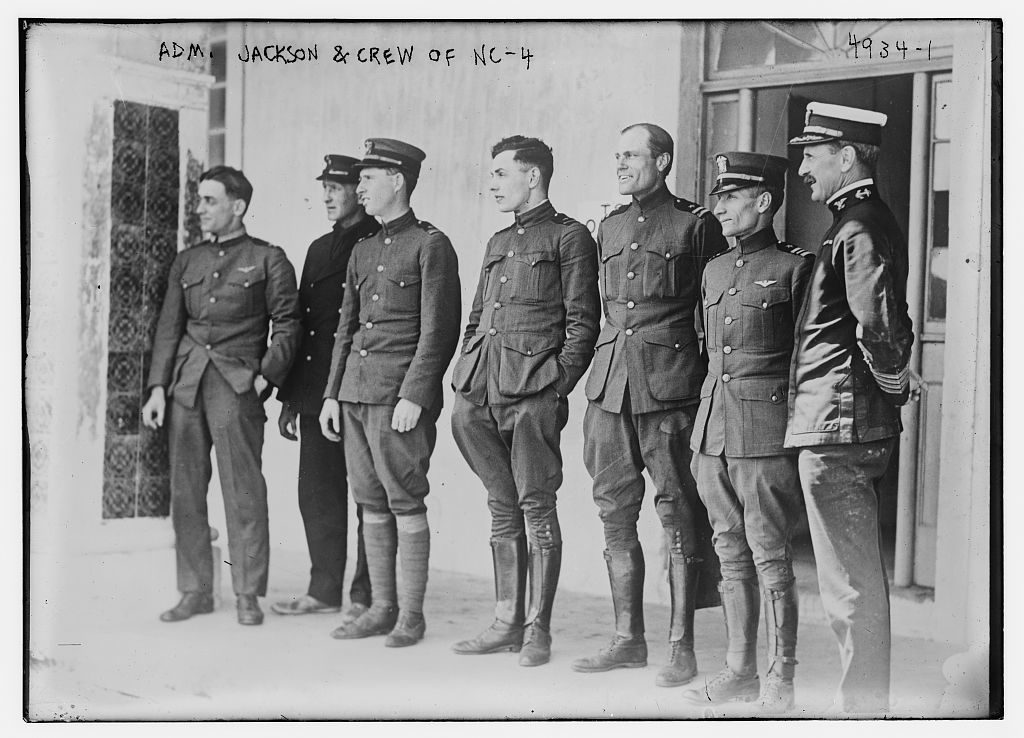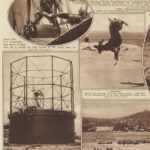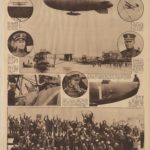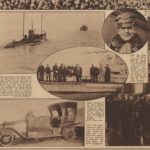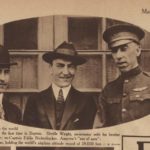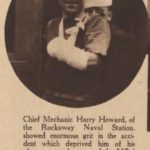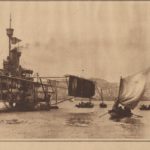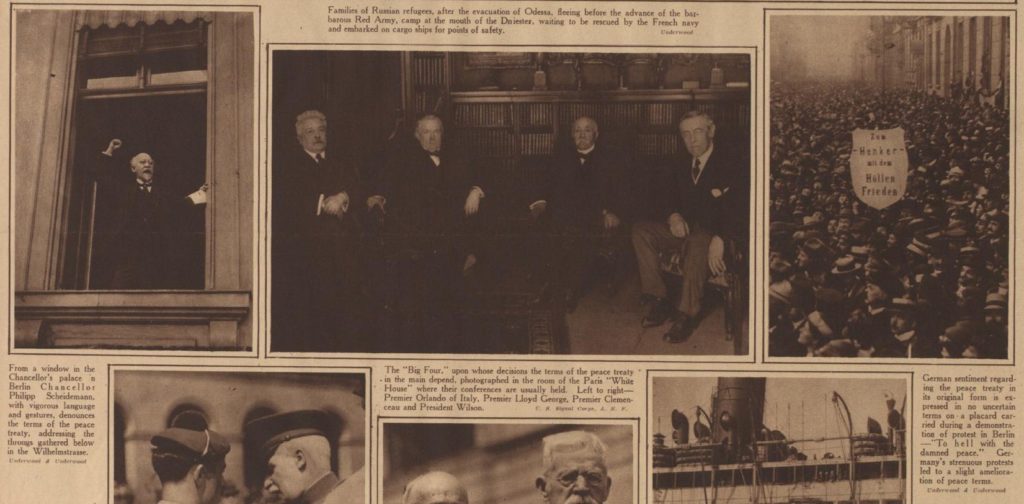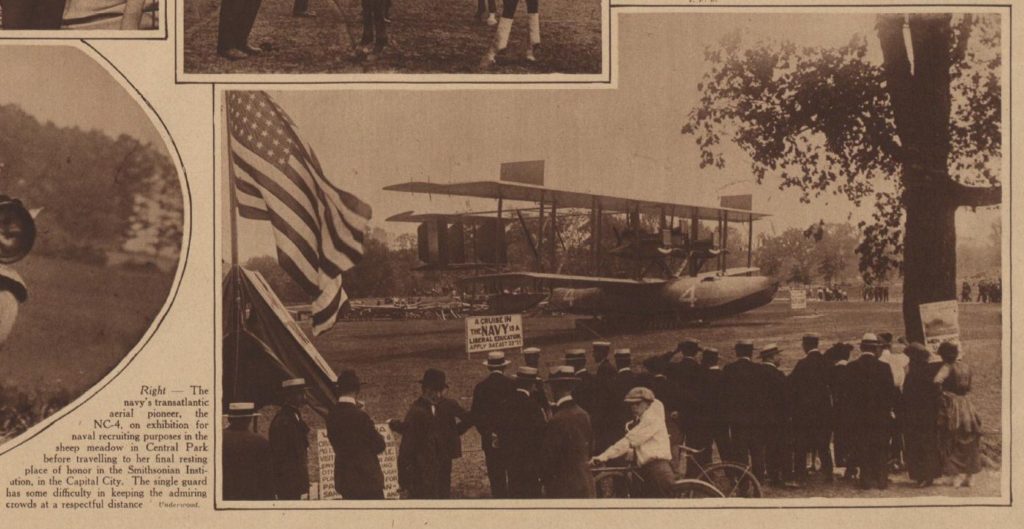Our society seems to like historical anniversaries [1], so I wondered if May 1919 headlines in The New York Times would mention the 50th anniversary of the completion of the United States’ First Transcontinental Railroad. I searched in vain. Certainly there were many momentous events in the aftermath of World War I, but I didn’t even notice a little blurb on the margins, such as “The Golden Spike fifty years on. See Page B2.”
However, the Times did observe another historical anniversary – on the fourth anniversary of the sinking of the Lusitania, the United States and its allies imposed its peace on Germany, despite German protests. As the month of May wore on there were a few minor negotiations about the proposed treaty terms.
_______________________________
And the newspaper was keenly interested in another feat of transportation technology – the first transatlantic airplane flight. It was quite a competition. The first success was a flight with many legs and with several men on-board. In fact, it was very much an organizational effort. The NC-4 was one of three seaplanes started by the United States Navy. Many ships were out in the ocean trying to keep track of the planes.
Wikipedia summarizes, the NC-4’s accomplishment:
First transatlantic flight
On 8–31 May 1919, the U.S. Navy Curtiss NC-4 flying boat under the command of Albert Read, flew 4,526 statute miles (7,284 km) from Rockaway, New York, to Plymouth (England), via among other stops Trepassey (Newfoundland), Horta and Ponta Delgada (both Azores) and Lisbon (Portugal) in 53h 58m, spread over 23 days. The crossing from Newfoundland to the European mainland had taken 10 days 22 hours, with the total time in flight of 26h 46m. The longest non-stop leg of the journey, from Trepassey, Newfoundland, to Horta in the Azores, was 1,200 statute miles (1,900 km) and lasted 15h 18m.
Fifty years later earthlings anticipated an even longer journey, one with fewer legs even though it hopefully was going to be a round trip. The first leg was a whopper, at least 225,000 miles, but the second was relatively tiny as two men in an Eagle were scheduled to descend to the surface of the moon. This journey was also very much an organizational effort. In fact, the prior December three “astronauts” practiced that gigantic first leg. While they were orbiting the moon, they took a photograph of the earth.
I thought of Rev. Dr. Francis Vinton’s sermon with the completion of the transcontinental railroad: “Three thousand two hundred and eighty-five miles of continuous railway within four degrees of latitude and fifty degrees of longitude in the temperate zone.” The crew of the Apollo 8 caught a lot more than that in a snapshot.
When I saw the image of the crashed seaplane, I thought of Walter Cronkite with tears in his eyes telling us about a crash during the Gemini stage of NASA’s moon campaign. It probably was the 1966 NASA T-38 crash
Henry Morgenthau Sr., who predicted a second world war in 15 or 20 years, served as the United States diplomat to the Ottoman Empire from 1913-1916 and reported the Armenian massacre as genocide.
According to the May 29, 1919 issue of The New York Times, Harry Hawker, who with navigator Kenneth Mackenzie Grieve, crashed during their attempt to win the Daily Mail £10,000 prize for the first flight across the Atlantic in “72 consecutive hours,” bashed the U.S. Navy effort. He “deprecated the organization which had won for the United States the honor of the first crossing of the Atlantic by a heavier than air machine.
He held that it was not a serious attempt, with a ship stationed at “every twenty yards.” Also, “if you put a ship every fifty miles it shows you have no fight in your motor.” One reason that the NC-4 wasn’t eligible for the prize is because it took longer than 72 hours.
I got the earth image at Wikipedia. From the Library of Congress: recruiting poster; NC-4 at Horta; it’s crew; Times May 11th; Trib May 18th, June 15th, June 22nd
July 8, 2019: I’m adding a couple pictures from the July 20, 1919 issue of the New York Tribune at Library of Congress.
- [1]at least Sumpter does↩

